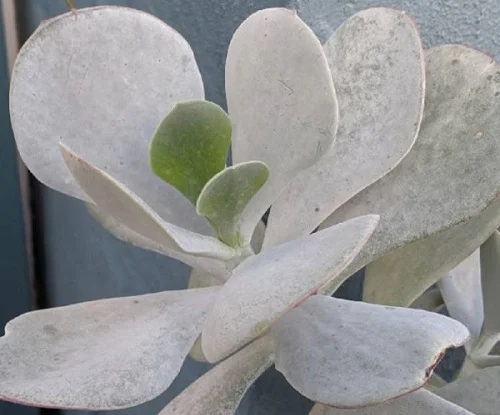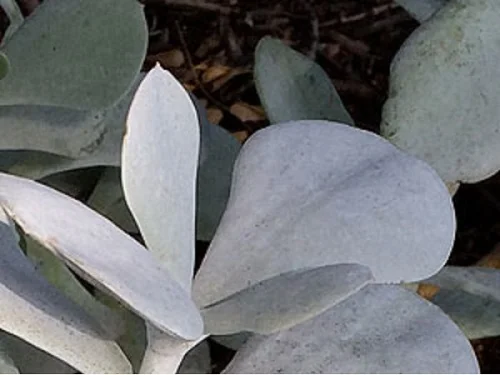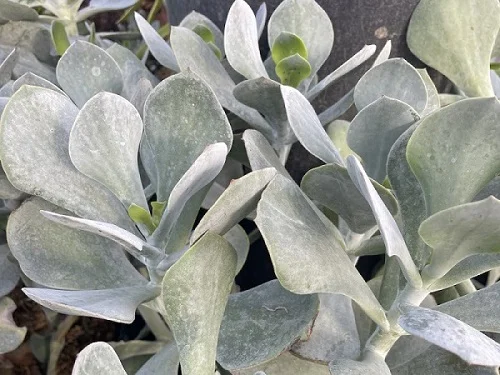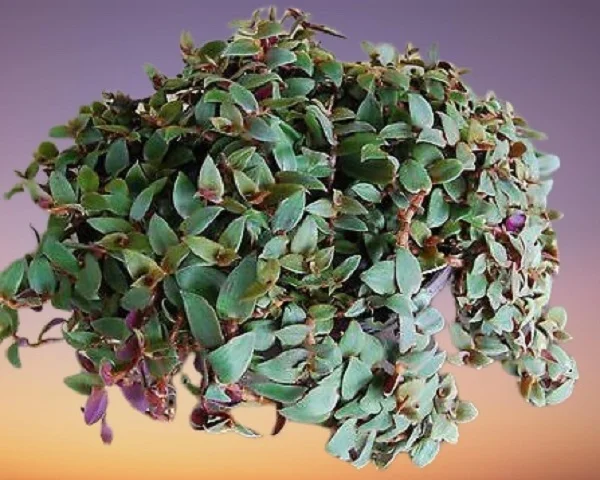How to Propagate Pig's Ear Succulent (Cotyledon orbiculata) in 4 Easy Ways
Some links in this post may be affiliate links
Pig's Ear Plant (Cotyledon orbiculata) is best propagated from stem-tip cuttings or from leaf cuttings at the beginning of the growing season. The stem-tip cuttings and leaf cuttings can be successfully rooted either in water or in soil.
Cotyledon orbiculata also called Round-leafed Navel-wort, Silver Pig's Ears or Round-leafed Cotyledon bears succulent leaves whose shape resemble a pig's ear and hence the common name, 'Pig's Ear'.
Round-leafed Navel-wort grows best in very bright light to full sunlight, warmth of 16-260C, humidity of 50-55% and moderately moist, rich, well-drained, succulents soil coupled with monthly feeding in the growing season. Learn how to grow and care for Cotyledon orbiculata.
Pig's Ear Plant is easy to propagate. We have outlined herebelow 4 methods of Cotyledon orbiculata propagation. Keep reading to learn how to propagate this plant.

1. Propagating Pig's Ear Succulent from stem-tip cuttings in water
- Take a stem-tip cutting of about 2-4 inches long from a healthy plant. Ensure it has 2 or 3 leaf nodes. Strip off the lower leaves.
- Allow the cuttings to dry (callus) for 1-3 days before planting to prevent rotting.
- Once callussed, dip the lower cut end of the stem-tip cutting in a rooting hormone to hasten rooting.
- Submerge 1-2 inches of the stem-tip cuttings in a jar of plain water or in a propagation station while ensuring that the leaves are not in contact with the water.
- Place the set up in a warm, well-lit spot away from direct sunlight. Change the water every 5-7 days.
- When a good amount of roots have formed on the cuttings, transfer the cuttings into individual pots in moist, quality cactus and succulents soil.
- Position the set up in a warm, well-lit place away from direct sunlight to avoid scorching.
- Maintain the soil moist until new growth has emerged and substantial growth has been observed.
- Transfer the new plant into one size larger pots, preferably clay pots as they are porous and will not hold excess moisture. At this point you can begin routine care.
2. Propagating Pig's Ear Succulent from stem-tip cuttings in soil
- Take a stem-tip cutting of about 2-4 inches long from a healthy plant. Ensure it has 2 or 3 leaf nodes. Strip off the lower leaves.
- Allow the cuttings to dry (callus) for 1-3 days before planting to prevent rotting.
- Once callussed, dip the lower cut end of the cutting in a rooting hormone to hasten rooting.
- Select a small pot about 6-8 inches wide. Ensure that the pot has a drainage hole to prevent the soil from getting soggy soil as it can lead to rotting.
- Fill the rooting container with cactus and succulents soil. Moisten the soil lightly.
- With a pencil or similar object make a hole in the moist rooting mix. Insert the cutting in the previously made hole. Lightly cover the base of the cutting with the rooting mix.
- Place the set up in a warm, well-lit place away from direct sunlight and water sparingly, only when the soil is dry.
- The cuttings should root in about 3-4 weeks. Allow the new plant to be well established after which you can begin routine care.

3. Propagating Pig's Ear Succulent from leaf cuttings in water
- Take leaf cuttings from a healthy plant. Allow the leaf cuttings to dry (callus) for 1-3 days.
- Once callussed, dip the lower cut end in a rooting hormone to hasten rooting.
- Place the leaf cuttings in a jar of plain water or in a propagation station while ensuring that the leaf blades are not in contact with the water.
- Place the set up in a warm, well-lit spot away from direct sunlight. Change the water every 5-7 days.
- When a good amount of roots have formed at the base of leaf cuttings, transfer the cuttings into individual pots in moist, cactus and succulents potting mix.
- Position the set up in a warm, well-lit place away from direct sunlight and maintain the soil moist until new growth has emerged and substantial growth has been observed.
- Transfer the new plant into one size larger pots, preferably clay pots as they are porous and will not hold excess moisture. You can now begin routine care for the new plants.

4. Propagating Pig's Ear Succulent from leaf cuttings in soil
- Take leaf cuttings from a healthy plant. Allow the leaf cuttings to dry (callus) for 1-3 days.
- Once callussed, dip the lower cut end in a rooting hormone to hasten rooting.
- Lay the leaves on moist succulents soil and do not allow the cut end to touch the soil to prevent rotting.
- Place the set up in a warm, well-lit place and maintain the soil moist through out by light misting.
- Roots from the cut end of the leaf will grow into the moist soil and soon after, new plants will develop at the base of the leaf.
- Carefully lift the new plants and pot in individual small clay pots while taking care not to damage the delicate roots.
- Maintain the soil slightly moist until the new plants are well established after which you can begin routine care.
You liked it? Share on social media.
Related Content
Amazon Associates Disclosure
Homeplantsguide.com is a participant in the Amazon Services LLC Associates Program, an affiliate advertising program designed to provide a means for sites to earn advertising fees by advertising and linking to amazon.com.





